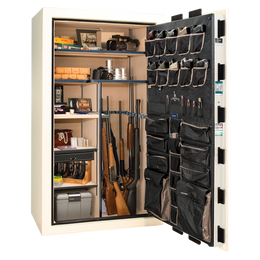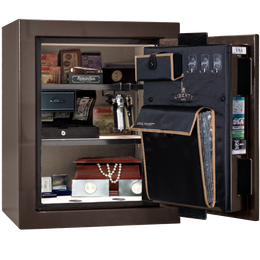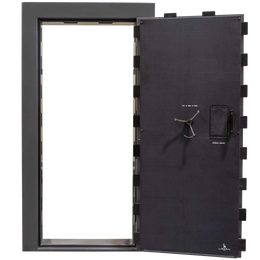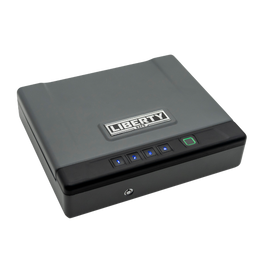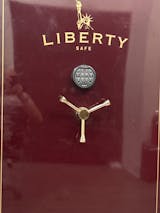Let’s be clear: Gun safety is everyone’s responsibility. Whether or not you own a gun, and whether or not you have strong feelings about the Second Amendment… The undeniable fact is that guns are everywhere in America and have been for hundreds of years. Guns are made of durable materials and can last for centuries. They don’t just disappear, even in places where they are banned.
If you own firearms, it is your responsibility to keep them secure and out of the hands of children and any other unauthorized users. And if you don’t own guns but have kids, it’s your responsibility to teach them the basics of gun safety so they know what to do if and when they come across a gun outdoors, at a friend’s home, or somewhere else.
Let’s go over some of the key principles for teaching gun safety at home, both for gun owners and for those who don’t own firearms but want to keep their kids safe.
The cultural impact of firearms and the need to teach gun safety
America was founded on revolutionary principles of individual liberty and responsible, representative government. That foundation came at a steep price, paid in blood. Firearms have been an important part of the American culture well before keep and bear arms was formally legalized in the Bill of Rights.
Furthermore, American gun culture is deeply entrenched in Hollywood movies, TV shows, video games, music, and literature worldwide. Even actors who are outspoken critics of private firearms ownership seemingly have no issue starring in gun-centric movies and taking home the huge paychecks that result. Many kids grow up playing with toy guns, or fashioning makeshift toy guns out of sticks or pipes. This is very common, just as kids playing with pretend swords, bows, arrows, and other makeshift weapons has been for thousands of years.
Historically, firearms use has been widespread in western society, and children were often taught to use guns from an early age. Guns were considered basic tools for acquiring food, defending the home, or protecting livestock and crops. Over the past century, as America has further transitioned away from a primarily agrarian society, some communities (usually larger cities) have gradually lost touch with firearms and no longer see the need for them. However, there are still many places where kids are taught the safe and responsible use of firearms, and where guns are commonplace in pretty much every household.
Promoting responsibility and gun safety
According to Kidshealth.org, “The best way to protect your child from being hurt or killed by a gun is to not keep guns at home and to avoid homes that do have guns.” This simplistic but impractical standpoint is parroted by anti-gun organizations such as the Brady campaign as well as the American Academy of Pediatrics, which says, "The most effective way to prevent unintentional gun injuries, suicide and homicide to children and adolescents, research shows, is the absence of guns from homes and communities."
Some anti-gun organizations and parent groups encourage you to ask every visitor to your home if they have a firearm in their vehicle or on their person and ask all your kids’ friends’ parents if they keep guns in their homes. Obviously you would then refuse to let your kids play with anyone whose family owns guns.
This may sound like good advice to you if you didn’t grow up around guns and don’t like them. And, if you agree with this approach, more power to you. However, it’s not really a useful or practical way to solve any problem. It’s simplistically obvious that the best way to avoid injury by (X) is to not have any exposure to (X). However, it doesn’t address the factual situation that there are more than 400 million guns in the US, and regardless of your personal feelings about firearms ownership and use, the hard reality is, as we mentioned above, those guns don’t simply evaporate when lawmakers make them illegal. Guns last practically forever, and there’s a chance your kids will encounter guns at some point even if you don’t own guns or participate in hunting or shooting sports.
To prevent auto-pedestrian accidents, do we try eliminating automobiles, even if we don’t like them, own them, or use them? Do we refuse to let our kids have any friends who own cars? No. We learn the traffic rules and teach safe practices for pedestrians so we and our kids can be safe when walking where there’s traffic. Similarly, we teach kids to stay away from alcohol and drugs, and give them tools to deal with situations even if we don’t drink or even have prescription medications in the house. Even if we don’t have a pool, we still teach our kids emergency swimming/survival techniques at a minimum. These are somewhat obvious analogies but they are applicable here.
So, the best real-world, practical way to prevent unintentional gun injuries and deaths is through consistent, regular gun-safety education and vigilance, as well as keeping your own guns (if any) secure from unauthorized access by using a quality gun safe or handgun vault.
Educational initiatives: how to teach your child about gun safety
The most effective way to teach practical gun safety to kids has been taught for decades by Eddie Eagle and other child gun safety organizations. The main gun safety principles to teach kids are:
- STOP!
- Don’t touch
- Run away
- Tell a grown-up
These 4 actions are easy to drill with children and offer real-world, practical solutions for keeping them safe if they happen upon a gun.
First, STOP! This first step is crucial. Stopping first allows your child the time he or she needs to remember the rest of the safety instructions, and may diffuse some of the excitement or adrenaline rush that may occur when a child finds a gun.
The next step is the most important, really. DON’T TOUCH. A firearm that is not touched or disturbed is unlikely to be fired and otherwise endanger your child or other people. However, if other children in the area haven’t been taught these gun safety basics, it’s important to follow the next step as well.
RUN AWAY. This removes the temptation to touch the firearm as well as the danger that another person may negligently cause it to fire. Get out of the area.
TELL A GROWN-UP. Children should seek a trustworthy adult, neighbor, relative or teacher – if a parent or guardian is not available, and tell them about the gun as soon as possible.
Even if your child may think it’s a toy gun, teach them to follow these rules. And even if your child has been taught how to handle a firearm safely, you should stress that they don’t touch an unfamiliar gun in an uncontrolled setting, such as if they find a gun at a friend’s house or in a building or field somewhere. Tell kids to stop, don’t touch, leave the area, and find an adult quickly.
If you own guns, consider reducing the mystique surrounding firearms
This next point is optional, and depends on your personal situation and preferences. Gun owners may wish to reduce kids’ natural curiosity about guns by building familiarity in a safe environment. Children are naturally curious, and if they know you have guns locked up in your closet or safe, they might be tempted to try to access them without your permission. Bad things can result, particularly if kids haven’t been taught the rules of gun safety.
However, if you encourage your kids to be open with you and ask any questions they have about guns, it can create a useful dialogue and remove a lot of the mystique. This also is an opportunity for you to exemplify and teach the principles of safe firearms handling with confirmed-unloaded guns in a controlled environment. Teach them the four rules of gun safety, and if they break one of the rules while handling a gun during one of your instructional sessions, tell them in a straightforward way what they have done wrong, and lock the guns away until the next time. This will reinforce the importance of the four rules, while still establishing that it’s okay for them to come to you at a later time for more instruction and discussion.
If you work to remove the mystery surrounding guns and answer kids’ questions, they may naturally become less likely to exhibit unsafe behaviors if they encounter an unsecured firearm when you’re not around. However, regardless of how familiar your child may be with firearms, it’s still important to teach them to not touch, approach, or handle an unfamiliar firearm if they come across one in your home or elsewhere. As above, teach them to stop, don’t touch, leave the area, and tell an adult immediately.
Of course, if your child’s friends show an interest in firearms, or your child tells them that you own guns, you should speak to their parents and get their input before you introduce others’ children to firearms. Guns have become a sensitive topic for many people and you should be considerate of their wishes, regardless of how you feel.
In our view, one of the best ways to teach your kids how to be safe around guns is to take them to the range and give them some hands-on training. However, some kids simply aren’t interested in shooting, which is perfectly fine. Additionally, some kids who are interested in guns are objectively not mature or capable enough to handle and shoot guns safely. Parents need to be honest with themselves and make the right choice for their family.
The Liberty Safe advantage
Naturally, we believe the best way to keep kids, family members, and friends safe around guns is to keep all firearms secure in a quality gun safe, vault room, or handgun vault when not in direct use. You’ll be surprised how affordable a quality gun safe can be, and a good safe provides multiple benefits.
Secure storage
Several municipalities, local ordinances, and state laws now require the secure storage of firearms and ammunition. Failure to comply can result from anything from a misdemeanor or fine to criminal prosecution in the case a criminal accesses one of your firearms stored in an unsecure fashion.
If you dig into the wording, secure storage can mean different things in different places. In some places, locking your gun in a drawer or closet, separate from ammunition, is sufficient. Other locales may require a separate, locked metal container. In any case, a real gun safe or handgun vault is superior to any of those make-do options.
Access control
With a quality gun safe, vault door, or handgun vault, you control who can and can’t have access to your firearms. If you wish to give access to your spouse, older children, or other responsible family members, you may. We generally recommend keeping the number of people with your combination or access code to the very minimum.
Keeping your guns securely locked up helps prevent family members, children, or friends from gaining access to your guns and potentially harming themselves or others.
Protection against fire and environmental threats
A quality, fire-resistant safe that is properly equipped with a dehumidifier (where necessary) provides meaningful protection not just from a house fire, but from humidity-related corrosion, mold, rust, and other environmental damage.
And, as we’ve said before, you can store other things in your gun safe besides firearms. Heirloom firearms, records, and other valuables can have significant monetary, historical, and/or personal value. Their loss, theft, or damage can be financially and emotionally traumatizing. Keeping these items properly locked up in a climate-controlled safe can help prevent this pain.
Beyond security: Liberty Safe’s commitment to excellence
Liberty Safe is America’s #1 safe manufacturer because we are committed to providing the best-quality products and service at a reasonable price. We source our steel and materials in the USA, we employ US workers, and we maintain a US-based customer service center.
Customization and convenience
Liberty’s safes are available in a wide variety of colors, hardware types, and finishes, with your choice of modular interior configurations, interior or exterior hinges, and mechanical or digital locking dials. From basic and functional to premium and exclusive, there’s sure to be a Liberty safe that fits your style as well as your budget.
Customer support and warranty
Liberty has an industry-beating, transferable lifetime warranty on our safe bodies. If your Liberty safe ever goes through a fire or attempted break-in, Liberty will repair or replace your safe for as long as you own it. If there are issues with the door mechanism Liberty will repair or replace your safe and/or any parts needed, including the labor to fix it. This includes the handle, locking bolts, and internal workings of the door. What does transferable mean? It means that if you sell your safe or if you hand it down to your grandkids someday, it’s still covered by the original warranty.
Most safe companies offer some kind of warranty, but you need to read the fine print. As far as we're aware, we're the only safe company who will not only pay to repair or replace your damaged safe in the event of a fire or attempted break-in, but will also pay to have your new safe shipped and installed. We will also pay to have your old safe removed from your home.
And as noted above, our expert team of customer service specialists works right out of our manufacturing plant in Payson, Utah. Several team members have actually worked on our production floor building our safes from the ground up. Their product knowledge is unmatched, and they can help you with problems like forgetting your combination, answering warranty questions, giving you step-by-step instructions for replacing your e-lock’s battery, and more. Give them a call or email your questions and they’ll get you an answer ASAP!
*Made in the U.S.A. from U.S. and Global Parts.


